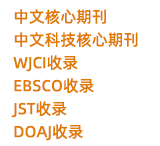以南昌大学前湖校区为例,利用SWMM模型对其进行水质模拟。通过使用实测降雨数据对该模型进行参数率定,论证了该模型能够较真实地模拟出本地区降雨径流非点源污染的特性。在此基础上,通过SWMM模型设计了不同的重现期、雨峰系数、前期干旱天数等气象条件,以此来分析雨水径流中的TSS、CODcr、TN和TP等污染物浓度随降雨历时的变化过程。结果表明:①随着重现期增大,污染物浓度峰值变大,峰值出现的时间提前;②随着雨峰系数的增大,污染物浓度峰值变大,峰值出现的时间延后;③前期干旱天数只会影响污染物的浓度峰值和前期浓度增长趋势,对峰值出现的时间没有影响。
Abstract
Taking the Qianhu campus of Nanchang University as an example, the swmm model was used to simulate the water quality.The parameters of the model are confirmed by using the measured rainfall data.It is proved that the model can simulate the characteristics of non - point source pollution of rainfall runoff in this area.On the basis of this, the swmm model was used to design the meteorological conditions such as different reproduction period, rain peak coefficient and early drought days, so as to analyze the concentration of TSS, CODcr, TN and TP in rainwater runoff with rainfall transformation.The results show that: (1) With the increase of the reproduction period, the peak value of the pollutant concentration becomes larger and the peak appears in advance; (2) With the increase of the rain peak coefficient, the peak concentration of the pollutant becomes larger and the peak time is delayed;(3) The number of days before the drought will only affect the peak concentration of pollutants and pre-concentration growth trend, there is no impact on the peak time.
{{custom_sec.title}}
{{custom_sec.title}}
{{custom_sec.content}}
参考文献
[1]Mitchell J.G.. Urban Sprawl, the American Dream [M]. National Geographic, July 2001: 48-68.
[2]Chen J. Y., Adams B. J.. Analytical urban storm water quality models based on pollutant buildup and washoff processed [J]. Journal of Environmental Engineering, 2006, 132(10):1314-1330.
[3]Ongley E D,Xiaolan Z,Tao Y.Current status of agriculture and rural non-point source pollution assessment in China.[J].Environment Pollution,2010,158(5):1159-1168.
[4]欧阳威,王玮,郝芳华,宋凯宇,王云慧. 北京城区不同下垫面降雨径流产污特征分析[J]. 中国环境科学,2010,(09):1249-1256.
[5]李倩倩,李铁龙,刘大喜,金朝晖. 天津市不同土地利用类型雨水径流污染特征[J]. 环境污染与防治,2011,(07):22-26.
[6]马晓宇,朱元励,梅琨,张艳军,张明华. SWMM模型应用于城市住宅区非点源污染负荷模拟计算[J]. 环境科学研究,2012,(01):95-102.
[7]李家科,李亚,沈冰,李亚娇. 基于SWMM模型的城市雨水花园调控措施的效果模拟[J]. 水力发电学报,2014,(04):60-67.
[8]Lewis A Rossman.Stormwater Management Model User’s Manual Vision5.0 [M].Cincinnati:USEPA,2010.
[9]蒋元勇. 城市集水区降雨径流污染特征及调控模拟研究[D]. 南昌:南昌大学,2015:45-47.
[10]郭琳,曾光明,程运林. 城市街道地表物特性分析[J]. 中国环境监测,2003,(06):40-42.
[11]Bennis S,Crobeddu E.New runoff simulation model for small urban catchments[J].Journal of Hydrology Engineering,2007,12(5)540-544.
[12]Keifei C.J,Hung C.Y,Wolka K.Modified chicago hydrograph method.storm sewer design . [M].Chicago:University of Illionois,1978.
[13]袁宏林,陈海清,林原,高阅军,龚令. 西安市降雨水质变化规律分析[J]. 西安建筑科技大学学报(自然科学版),2011,(03):391-395.
[14]纪桂霞,吴玲倩,金敦,王平香. 城市小区雨水径流污染物监测及相关性研究[J]. 水资源与水工程学报,2010,(02):105-107+112.
[15]吴雪军,杨就意. 南昌市青山湖排水区排涝规划技术介绍[J]. 中国给水排水,2015,(23):125-129.
[16]李文涛,隋军,刘成林,牛樱,周建华,谭锦欣. 设计降雨雨峰系数对排水管网设计流量的影响分析[J]. 净水技术,2015,(05):100-103+111.



